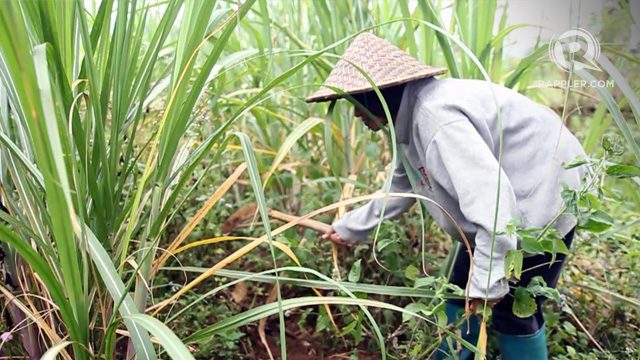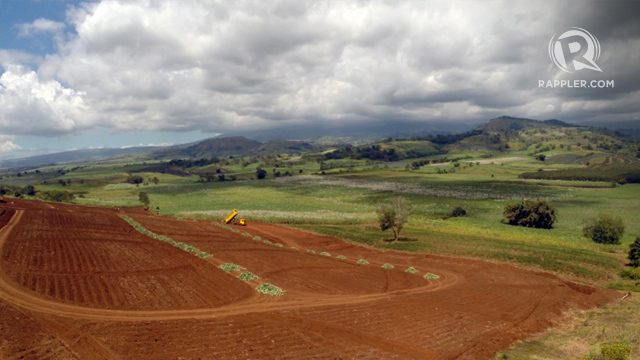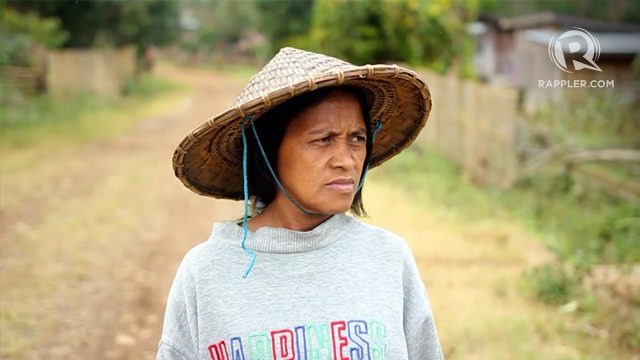SUMMARY
This is AI generated summarization, which may have errors. For context, always refer to the full article.

BUKIDNON, Philippines – Who knew something so sweet could have a bitter making?
It was 5 am, dim and chilly, yet Merenia Libog was already out walking. All for sugar, all for survival. The road was unpaved and caked with mud and stones. Around them were tall rows of sugarcane; many grew in the hands of the poor, but filled pockets of the rich.
Her flashflight flickered against the rocky trail. She could have rented a motorbike for P50, but she had no money to spare, so her feet had to pay. At the end of the walk, a truck waited. Laborers like Merenia will be taken to a hacienda; they are to return home only after 9 hours or so.
She and her husband have been sugarcane farmers for over 10 years in the town of Pangantucan, Bukidnon.
Before working, Merenia remembered the bitterness of her morning coffee. They ran out of sugar, she had it black – one of the many ironies in her life.
Bukidnon is known as a “highland paradise” and Northern Mindanao’s “food basket.” It is among the country’s top producers of sugar, rice, corn, banana, coffee, pineapple, and other fruits and vegetables.
Some of Bukidnon’s food producers, however, have fallen off the basket.
Bounty

Bukidnon is a landlocked plateau, with majority working in agriculture. (READ: Why PH agriculture is important)
It is home to different indigenous peoples (IP), such as the Manobo like Merenia. The term Manobo translates to “the first to make fire.” Their ancestors lived on top of the sacred mountain of Kalatungan, where they made fire during a great flood, according to Datu Ampuan Joedoro Sulda.
Before getting resources, Manobos ask permission from god. Traditionally, everything was for free and people only planted what they needed, nothing was for sale.
“Before, trees were plenty,” Datu Sulda said in Filipino. Resources started to thin upon the entry of settlers, he explained. “That’s when logging companies and large-scale planting and selling started.”

Sugarcane plantations entered the picture, with multinational corporations following suit. It provided livelihood to many, but problems soon surfaced – small salaries paired with enormous debts.
The Datu himself was once a sugarcane laborer; many of his neighbors to this day are stuck in the industry. Now the Datu serves as an IP Mandatory Representative, a government post.
Although sugarcane plantations provide them a steady income, it is still too small to provide a family’s needs, according to professor Loreta Sil Dinlayan of the Bukidnon State University.
Many IPs were eventually forced to sell, rent out, or lease their lands to sugarcane and banana plantations, leaving them with smaller territorial lands. Some became landless; this means not all of them can have backyard vegetable gardens – an affordable food source and a humble livelihood.
“Land and territories are getting smaller, so does farming which is already small-scale to begin with. This threatens their food security,” Dinlayan explained.
Instead of having rice, corn, and vegetable fields which they could harvest for food, Pangantucan’s lands are more and more occupied by industrial and commercial crops like sugarcane.
The emergence of plantations has also pushed some Manobos to abandon their cultural practices, according to Datu Sulda, choosing “instant money” over traditional gardening.
Bittersweet

How can hunger persist in paradise? If not everyone gets a bite.
In Bukidnon, 93% of families do not own land, a recent World Food Programme (WFP) survey revealed. More than 116,000 of them belong to poor households, the highest among the country’s 16 poorest provinces.
What they earn from sugarcane goes straight to loans mostly. Like crumbs, they scrape off whatever is left to survive.
In a year, Merenia borrows money from a cooperative to buy fertilizers and equipment. She and her husband do their own weeding, plowing, and harvesting; however, sometimes they need to hire laborers for extra hands. On average, they earn P28,000 annually, but they need to pay a P25,000 loan.
The loans pile up, making it difficult for the farmers to catch up. To eat, they utang (borrow money) from sari-sari stores. In the whole province, 47% have borrowings, the WFP found.
If not farming in their own land, most people work as laborers in haciendas for P150/day – work, however, is irregular. Their salary is nothing compared to the price of sugar itself.
Sugar sells for about P1,650 per sack, according to Remedios Pelpinosas, Pangantucan’s agricultural technologist, with prices fluctuating.
The local government of Pangantucan has a “plant now, pay later” agriculture program which provides seeds and financial support to farmers, Pangantucan Councilor Ben Calunad explained. However, this program applies only to those who already own lands.
A program for the landless is yet to exist.
Merenia’s mother, Saturnina, also depends on sugarcane. She is 66 and is still bending her back every day.
Mother and daughter both say that their families are the hungriest during the planting season from June to September. Money comes in October during the harvest season.
Unlike their rich counterparts, big planters, Merenia and Saturnina have to worry about their daily food.
It is a tale familiar to many Filipinos: the rich get richer, while the poor remain poor. Such is the life of many sugarcane farmers.
After hours toiling away in the name of sugar, Merenia is able to rest. She prepares dinner for the whole family: rice and tuyo (dried fish).
Her hands are sore from working the field, no trace of sweetness in her body. Tomorrow, she rises early to do it all over again. – Rappler.com
Add a comment
How does this make you feel?
There are no comments yet. Add your comment to start the conversation.